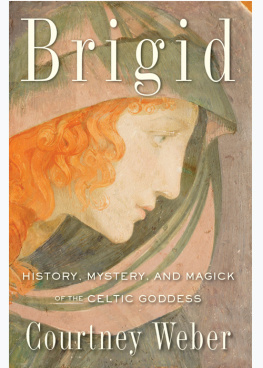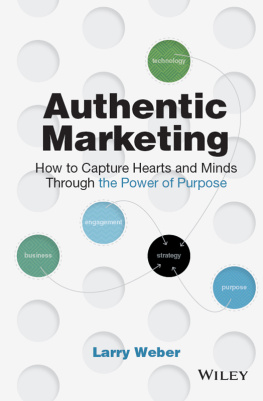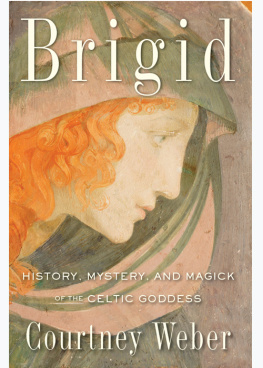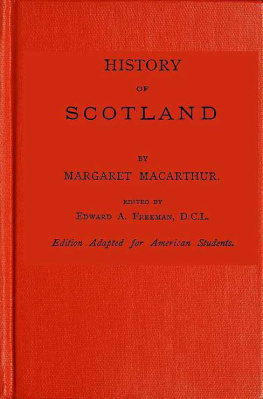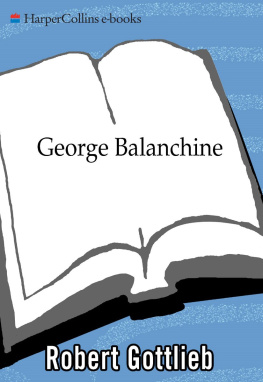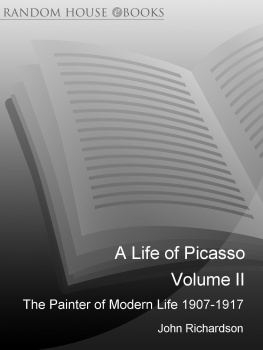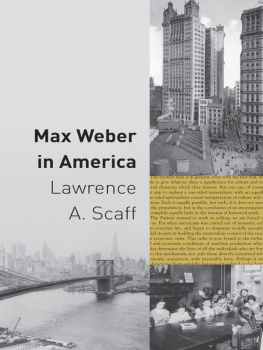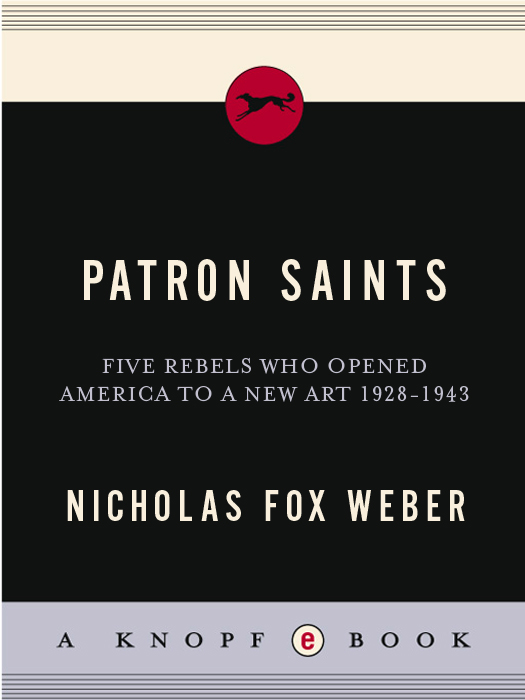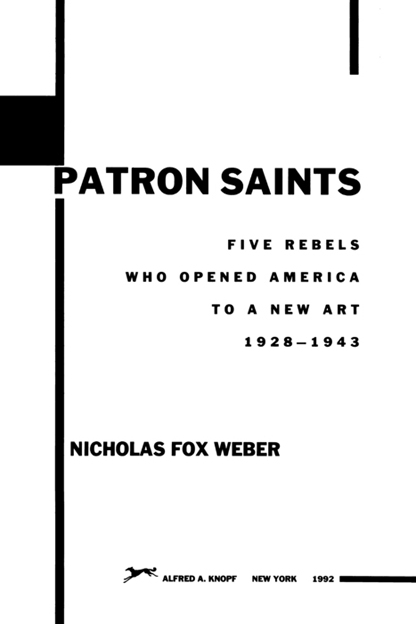ALSO BY NICHOLAS FOX WEBER
The Drawings of Josef Albers
The Woven & Graphic Art of Anni Albers (co-author)
Leland Bell
Warren Brandt
Josef Albers: A Retrospective
The Art of Babar
THIS IS A BORZOI BOOK
PUBLISHED BY ALFRED A. KNOPF, INC.
Copyright 1992 by Nicholas Fox Weber
All rights reserved under International and Pan-American Copyright Conventions. Published in the United States by Alfred A. Knopf, Inc., New York, and simultaneously in Canada by Random House of Canada Limited, Toronto.
Distributed by Random House, Inc., New York.
Owing to limitations of space, acknowledgments for permission to reprint previously published and unpublished material will be found following.
ISBN 0-394-57854-6
eBook ISBN: 978-0-8041-5402-4
LC 91-58575
v3.1
For Katharine
CONTENTS
PREFACE
Today we pick up our newspapers and read regularly about another Picasso show, the latest performance of a Balanchine ballet, an exhibition with sculpture by Lachaise or Calder, a new auction record for Brancusi or Balthus. We take it for granted that the New York City Ballet and the Museum of Modern Art are alive and thriving. In the last decade of the twentieth century, these names and institutions are an integral part of our culture.
But what is now generally accepted was, on first presentation, beyond the limits of permissible taste. Sixty years ago, the larger publicrich or poor, with cursory education or doctoral degreeswas horrified by the artistic manifestations of modern thinking. Household appliances, modes of transportation, or medical treatments could be contemporary; paintings and sculpture and the higher forms of entertainment should conjure earlier times. For Picasso and Balanchine and Calder to attain their current stature, and for the City Ballet and MoMA to take root, required the daring and tenacity of their small league of supporters.
A handful of seers paved the way for modernism in America. The activities of some of these individuals are already well known. The pioneers who helped shape our major museums of recent artAlfred Barr, Hilla Von Rebay, Albert Barnes, and othershave been the subjects of monographs, and the focus of considerable attention. So have many of our most adventurous modern collectors, like John Quinn, Peggy Guggenheim, and Joseph Hirshhorn, as well as other arbiters of modern taste, like Philip Johnson. The main characters in this bookLincoln Kirstein, Edward M. M. Warburg, Agnes Mongan, A. Everett Austin, Jr., James Thrall Soby, and some of their associatesfall into a different category. While the nature of their contribution is known to insiders and close followers of the art world, many of their interwoven activities of the late 1920s and the 1930s have not previously been considered in depth.
These five individuals were not unique in their involvement with new forms of art. Ever since the Armory Show of 1913, a small number of Americans had supported various expressions of current aesthetic experimentation, most of which had their roots in Europe. But the new taste was not widespread. Kirstein, Warburg, Mongan, Austin, and Soby all took original and unpopular viewpoints that required courage to defend. While still very young, they were taken or sent to Europe by their parentsFrance, Italy, and England being, after all, the centers of world culture for most educated Americans of the time. And what they found and brought home was revolutionary.
By championing what few people had dared to consider, these adventurers awakened many of their friends, as well as a segment of the general public. While still college students, Lincoln Kirstein and Edward Warburgin tandemgave the public its first look at one startling art form after another: Buckminster Fullers Dymaxion House, Alexander Calders Circus, Bauhaus design, and the latest painting, sculpture, and photography. They established a vital precedent for New Yorks Museum of Modern Art, in which they eventually played an active role. They brought George Balanchine to America. At the same time that they worked feverishly to pay for tutus and studio space and then to bring in the audiences, they helped enable artists as different as Gaston Lachaise and Josef Albers to survive, and gave key support to people ranging from Philip Johnson to Igor Stravinsky. Agnes Mongan fostered an unprecedented appreciation of drawings. By viewing the spontaneous, unplanned sides of artists work and giving rare vividness to the language of art history, she expanded the appreciation of art. She also changed the notion of what women might do in the male-dominated museum world and academic establishment. A. Everett Austin mounted museum exhibitions of a type America had never seen before. As director of the Wadsworth Atheneum in Hartford, Connecticut, he installed, in the early 1930s, shows of Surrealism and Picasso, where a short time before there had been nothing more adventurous than representational landscape painting. Austin was also the impresario for innovative musical and theatrical performances. James Thrall Soby helped enlarge the American audience for some of the most puzzling aspects of modern art. In the sort of New England suburban household where the expected recreation would have been a bridge game, he ran a Salvador Dali film that only months earlier had caused an uproar in Paris. Through his writing, collecting, and curating, he led people to accept the hitherto alien work of de Chirico, Balthus, and many other painters.
What these five people did was largely behind the scenes, yet it changed the cultural landscape of America. But altruism was by no means their only motive. For each of them, the art they supported helped to establish a much needed sense of self. And because of its free and courageous nature, that art also helped to liberate its champions from repression. It was their means to perceptions and pleasures that might otherwise have been unavailable.
I have not attempted the comprehensive biography that each of my major characters warrants. That would be a very different task. What I have tried to do, rather, has been to convey something of the spirit of these individuals and of the way that they often egged one another on. And I have attempted to illustrate a form of artistic support that, unlike modern government patronage, broke boundaries rather than imposed them.
To varying degrees, Kirstein, Warburg, Mongan, Austin, and Soby all came from a world of privilege. They could have followed timeworn paths. The men could have opted for traditional careers, while Agnes Mongan might have chosen to do no work at all. All might easily have maintained the tastes of their parents, as did most of their contemporaries. Instead, driven by passion, undaunted by constant adversity, and generally eager to amuse as much as to edify, they altered their world.
I
He was set down as belonging to that odious category of outsiders who hung loosely on the fringes of college life: odd persons going about alone, or in little knots, looking intellectual, or looking dissipated. They were likely to be Jews or radicals or to take drugs; to be musical, theatrical, or religious; sallow or bloated, or imperfectly washed; either too shabby or too well dressed. The tribe of these undesirables was always numerous at Harvard.


